Feeling overwhelmed by your design projects? From creating a stand-out logo with a logo maker to building complex user interfaces, graphic design is about making things look good and work well. But getting those great visuals across the finish line can be challenging. That's where effective design project management comes in.
Designers today are more than artists. They're problem-solvers, strategists, and often, their own project managers. Without a clear plan, even great design ideas can lead to confusion, extra work, and missed chances, frustrating everyone.
This article explains why structured processes are crucial in graphic design. We'll also examine how embracing solid project management practices can transform your design process, leading to smoother projects, happier clients, and a more fulfilling creative career.
Understanding the Graphic Design Project Lifecycle
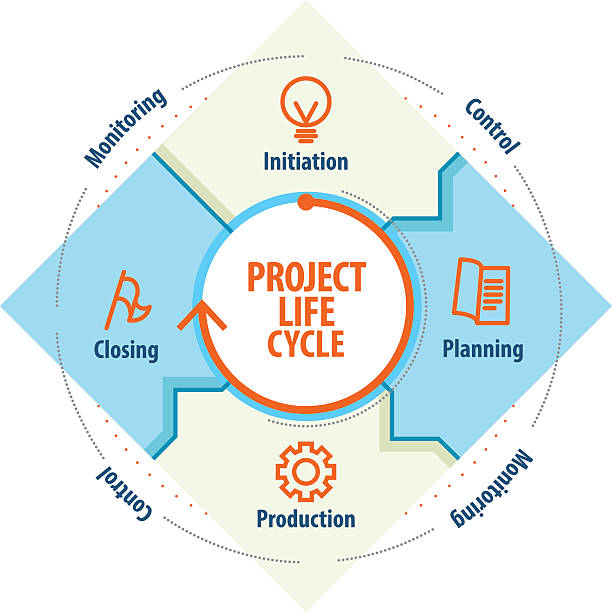
Every successful graphic design project follows clear steps. This is true for a simple social media image, a complete brand identity, or a detailed publication.
Understanding each step is key to good design project management. It acts like a map, ensuring no critical part of the design process is missed and everyone knows their role at each stage. It also helps manage client expectations by showing them their project's journey.
Let's break down these essential phases:
Initiation: Starting the idea right
This is where a project officially starts. Consider it the discovery phase, setting the foundation for everything that follows.
Here, you'll deeply understand the client's vision and goals. This includes initial meetings, where active listening is crucial.
Ask open-ended questions like: "What problem are we solving for your business?" and "What does a successful design look like to you in terms of tangible results?"
Brainstorming ideas with the client, even rough concepts, helps align visions early on.
Planning: Your project's blueprint for success
Many see planning as the most essential step for good design project management. This is where your abstract idea becomes a clear action plan. It involves defining the project's scope: what it will and won't include. This clarity is crucial to avoid misunderstandings later.
Next, you'll figure out resources. This means knowing who's on the team and their specific roles, what tools or software you need, and your budget.
It's also vital to create a detailed timeline. This breaks the project into smaller, manageable tasks with clear deadlines. Breaking down a large project into smaller steps makes tracking less daunting and more manageable.
You'll also assess risks, considering possible problems like unexpected changes, technical issues, or delays in client feedback. Thinking ahead about what could go wrong allows you to create backup plans or mitigate potential problems before they become major roadblocks. This proactive approach saves time and stress later on.
Production: Making the vision real
This is the creative, hands-on part where graphic designers turn the plan into actual visuals. It involves creating concepts, drafting initial sketches or wireframes, developing prototypes, improving designs based on feedback, and making the final products. This stage needs teamwork and refinement as ideas develop and take shape.
For beginner designers, it's important to remember that execution isn't just about pure creativity but disciplined creativity. Stick to the plan and scope as much as possible, using the project brief as your guide. Be prepared to iterate, as design is rarely perfect on the first try. Each revision is an opportunity to refine and improve the vision.
Monitoring & control: Staying on track
As you work, you'll constantly monitor progress. This means regularly checking your schedule and budget, ensuring high quality, and quickly fixing any issues. This constant check allows for quick changes, stopping minor problems from becoming big ones.
Regular check-ins and reviews are crucial internally with your team and externally with the client. By actively monitoring, you can adapt your approach, reallocate resources, or adjust timelines as needed, preventing minor issues from escalating into significant project failures.
Closing: Finishing up and looking ahead
Once the client approves the final designs, the project officially closes. This means more than just handing over files.
It includes getting the client's formal approval (often called a sign-off), asking for feedback on how the project went, noting lessons learned for next time, saving all project files, and celebrating your team's hard work.
A strong closure ensures professional completion and provides valuable insights for your next design project management.
Planning and Setting Clear Objectives

Successful design project management starts with careful planning and clear goals. Taking time to plan well at the start is essential. It prevents problems later, saves time and money, and ensures the final design meets the client's needs. This initial investment in planning pays dividends throughout the project lifecycle.
Matching client wishes with design results
The most crucial first step in project management for design professionals is defining clear goals. Often, a client might have a vague request, like "I need a new logo."
As a skilled project manager, your job is to dig deeper. You ask: "Why do you need a new logo? What business goal will it help you achieve? Are you aiming for a new group of customers? Refreshing an old look? Launching a new product?"
It's essential to turn general wishes into specific, measurable goals. For example, instead of “make it look modern,” a goal might be: “create a brand identity that appeals to 18-35 year olds, shows trustworthiness, and stands out from competitors X, Y, and Z.”
Clear goals remove confusion and provide a way to judge the final design. Without clear goals, a design project is like a ship without a map. It might start, but it won't have a clear destination. Clear goals prevent misunderstandings and reduce costly and frustrating changes later, saving you and your client time and money.
Avoiding "scope creep"
One common challenge in graphic design project management is “scope creep.” This happens when project requirements slowly grow beyond what was initially agreed upon, often through small, unbilled requests. It can lead to going over budget, missing deadlines, and exhausting the design team.
The best way to prevent scope creep is to enforce the project brief. If a client asks for something not in the brief, you refer back to it. You explain that while you'd love to help, this request falls outside the initial scope and would require a change order. This transparent process ensures fairness and keeps the project on track and within budget.
Using resources wisely
Good resource management isn't just about money; it's also about effectively using people's time and skills. A clear budget ensures the project is financially sound for the design team and fair to the client.
This includes estimating hours for each design stage, considering overhead (like office space or software subscriptions), specific software or stock photo licenses needed, and a buffer for possible unexpected costs.
Transparent budgeting prevents hidden costs from surprising anyone and ensures the design team has what it needs to deliver high-quality work without being overworked or undervalued. It's about optimizing your team's talents and tools to achieve the best results efficiently.
The Impact of Strong Project Management

Good design project management pays off, and the facts prove it. When teams carefully plan and manage their projects, they significantly boost their chances of success.
For instance, high-performing organizations with mature project management practices meet their original goals 2.5 times more often than low-performing ones.
The impact of effective planning also extends to cost and efficiency. Studies and industry analyses consistently show that a lack of clear goals is a primary factor in project failure, often cited as the most common cause.
Conversely, effective scope management and thorough upfront planning are crucial for preventing costly rework and overruns.
While the exact numbers can differ based on the industry and type of project, everyone agrees that strong planning and keeping the project's scope in check significantly reduce wasted effort and make projects more profitable.
For instance, some reports suggest that poor project management can waste almost 10 cents of every dollar spent. This highlights how vital good project management is for a project's financial success.
Effective Communication and Collaboration
Communication is everything in graphic design project management. It ensures everyone understands and trusts each other, preventing delays, mix-ups, and mistakes.
Unifying workflows with digital platforms
Digital tools are key for design project management. Tools like Teamwork, Monday.com, and Adobe Workfront bring everything together. They help with talking, tasks, files, and tracking. They simplify work and connect teams.
Workamajig, for example, is for creative agencies. It has graphic design project management features, like client portals and billing. Using these tools prevents endless emails and lost files, making things organized and smooth.
Clear and regular updates
Design work often involves many changes, so feedback is always needed. Having clear ways to get feedback is key, and this means setting review times.
Make sure feedback is clear and valuable. Focus on project goals. Give examples. Avoid "I don't like it." This prevents bad changes and keeps projects moving forward.
Be open and respond fast
A good client relationship is vital for any design project. Therefore, it is very important to always be open and quick to reply to clients.
Give regular updates, even if there is no big news. Talk about problems early. Answer questions fast. This builds trust and makes the project better for everyone.
Time Management and Meeting Deadlines
In graphic design project management, time is crucial. Every minute counts. Making realistic plans and sticking to them is key for good project delivery and happy clients.
Effective time management does more than just meet deadlines. It helps your team work better, lowers stress, and builds client trust. Clients trust agencies that deliver projects on time.
Making realistic timelines
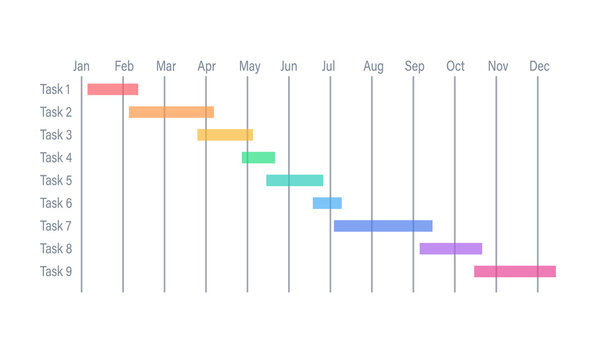
Planning a project schedule requires a good understanding of design. It's easy to be too hopeful about creative tasks. However, a smart project manager for design professionals adds time for tricky parts and unexpected problems.
Make realistic timelines. Include stages like research, ideas, drafts, reviews, client feedback, changes, and final delivery. It's vital to add 'buffer periods' or extra time. This helps with unexpected issues, tech problems, or slow client feedback. These buffers also prevent minor delays from ruining the whole project.
For example, if a task takes 8 hours, plan for 10. This gives you flexibility without missing the deadline.
Finding key tasks
Not all design tasks are equally important or urgent. Good time management means finding the tasks that must be done on time for the project to move forward. Also, know how tasks depend on each other.
For example, a logo must be approved before creating brand guidelines, which are also needed before website designs are final. Prioritizing helps teams finish the most important work first, keeping the project moving.
Tracking progress and adjusting
Even a good plan needs to be watched closely. Always track progress. Compare the actual time spent to what was planned. See if tasks are done. Is the team on track or falling behind? Why? Watching things closely helps you find problems early.
If a graphic designer struggles or a client is slow, the project manager can quickly fix it. This means moving tasks, changing priorities, or telling the client about a new timeline before things get bad.
Being flexible and adaptable is a sign of strong design project management. It's about seeing problems coming and stopping them, not just reacting.
Handling Revisions and Feedback

Changes are a normal and vital part of design work. They help a client's idea become real. However, changes can cause significant problems and cost too much without a clear plan.
Setting up a straightforward change process is key to stopping project overruns. It helps manage clients' expectations and keeps your design project financially healthy.
Clear rules for changes
One common problem in design is unclear rules for changes. You must set clear limits for revisions from the start. Put these rules in the project plan or contract. State how many rounds of changes are included.
For example, "two big changes and one small tweak." Also, define what a "big" change is versus a "small" one.
If a client asks for more changes than agreed, it's extra work. This means an added cost. Being clear helps manage client hopes and saves the design team's time and money.
Keeping records of feedback
It's easy to forget spoken feedback or make changes without a record. So, keeping track of all input and every change is key.
Use design project management tools that track communication and versions. Write down every client comment, noting the time and the design part it refers to. Also, log every change the design team makes and link it to the feedback. For design teams working remotely, an AI meeting assistant takes care of capturing client feedback and project discussions, so no important details get missed during virtual reviews. To simplify this process, consider using an AI note generator that automatically captures key discussion points, decisions, and action items during meetings. Pair these documentation practices with weekly timesheet templates to track how much time is spent on revisions and feedback implementation, giving you better insights into project profitability.
This creates a clear history. It stops misunderstandings and ensures all changes are made. It also helps if there's a problem or you need to return to an old version.
Guiding clients on providing constructive feedback
Clients know their business but might not know how to give good design feedback. A primary job for a project manager for design professionals is to teach clients how to provide helpful feedback. This includes:
- Asking clients to give all feedback at once, not bit by bit.
- Helping clients focus on project goals, not just their likes or dislikes. For example, "This yellow is too bright for our calm brand" instead of "I don't like yellow."
- Suggesting they show examples if they can't explain a change.
- Guiding them from unclear comments like "make it pop" to specific ones. For example, "Can we try a stronger font for the headline to make it stand out more?"
Teaching clients upfront helps get better feedback. It reduces back-and-forth and makes the revision process smoother. This strong client education turns feedback into a helpful team effort. It leads to more satisfying and successful results for everyone.
Utilizing Project Management Tools
The right tools are essential for design project management practices. They help design teams work together, track progress, communicate quickly, and manage resources well.
Excellent graphic design project management involves wisely picking and using these tools. These tools don't just automate tasks. They make things much more efficient, help communication flow, and build real teamwork. From meeting scheduling platforms that coordinate client reviews to collaborative design software enabling real-time feedback, the right technology stack can transform creative teams' operations. Additionally, project management courses boost tool use by teaching practical skills to lead projects, manage teams, and handle challenges effectively.
Picking the right tools
Navigating the vast array of project management tools available can seem daunting. To pick the right one for your team, always consider your team's unique needs, your current way of working, and whether the tool can grow with your business. The best tool will help you get things done and make it easy to stay connected with everyone involved in the task, including designers, clients, printers, and even couriers who handle final deliveries. For instance, creating a detailed Jira task with all relevant stakeholders tagged ensures everyone has visibility into project status and can collaborate effectively throughout the workflow.
Here are some popular project management tools to consider:
Spreadsheets
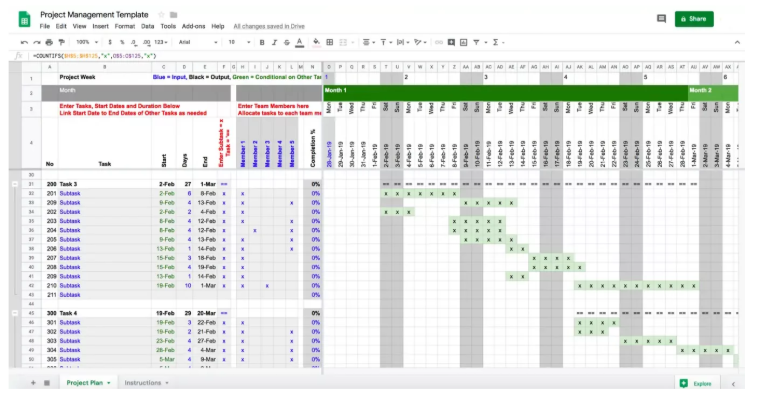
Source
Basic spreadsheets, like Google Sheets or Excel, are a very flexible and low-cost choice for tracking tasks for small teams. You can set them up however you like to organize and monitor your progress, though they require more manual updates than other software, unless you use a spreadsheet data connector to automate ClickUp data in Google Sheets.
Trello
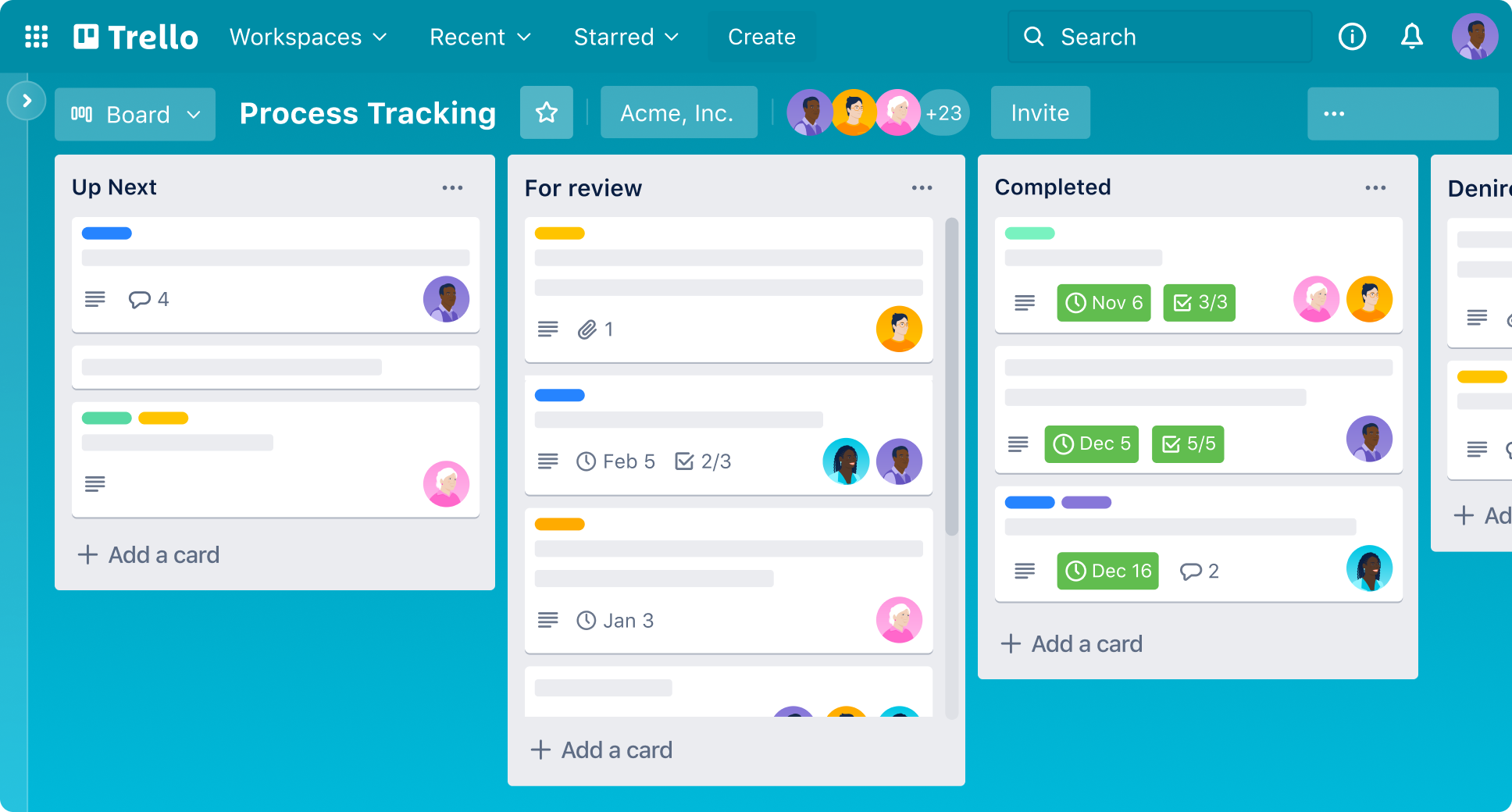
Source
Trello is a simple visual tool for tracking tasks, perfect for small teams or individuals working independently. It uses easy "boards" with cards to help you organize tasks, set due dates, and see your progress, making it great for simple projects.
Monday.com
 Source
Source
Many mid-sized studios and teams like Monday.com because it's very visual and can be set up to fit different project needs. It has strong features like detailed task tracking, automatic actions, and complete reports for managing many projects simultaneously.
Asana
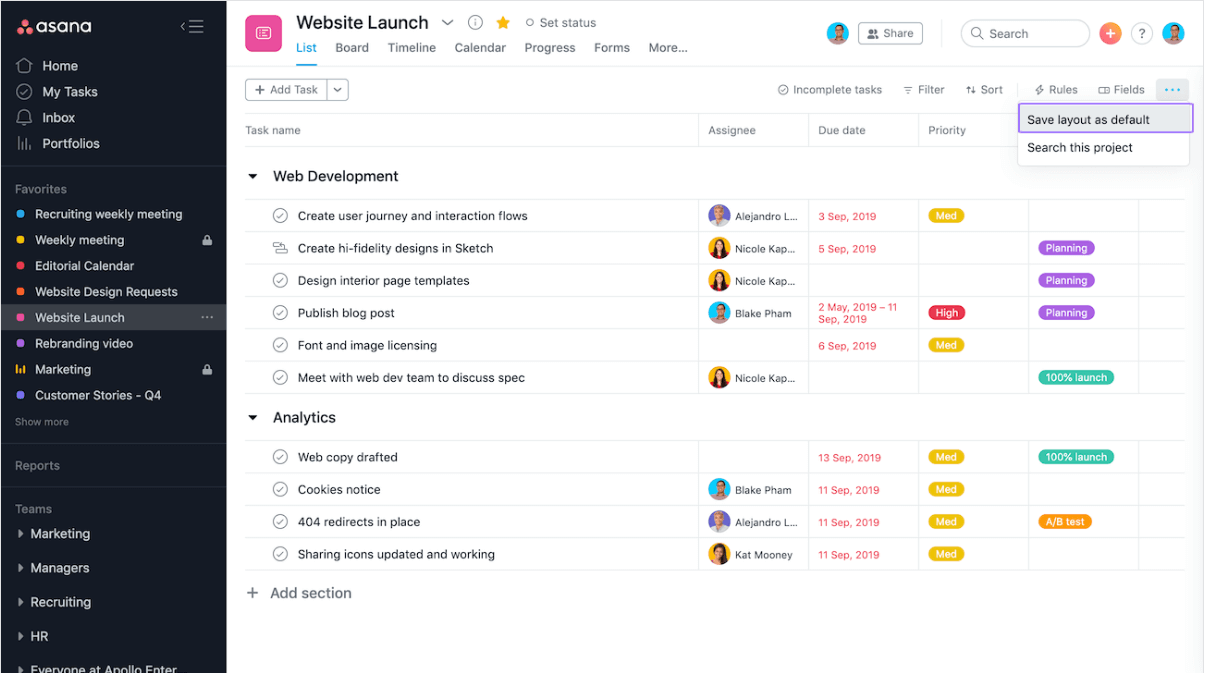
Source
Another top pick for mid-sized teams, Asana is a powerful yet easy-to-use tool for working together on projects. It helps teams organize, track, and manage their work effectively, with features for assigning tasks, setting deadlines, and seeing project progress.
Adobe Workfront
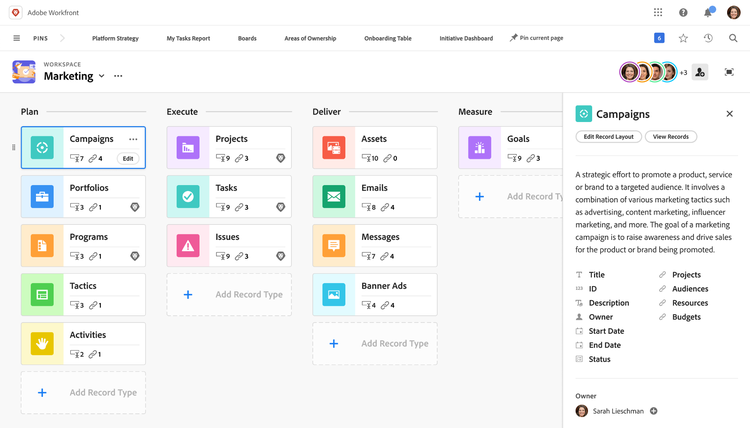
Source
Made specifically for larger creative companies, Adobe Workfront works perfectly with Adobe Creative Cloud programs. This tool helps manage big creative jobs from start to finish, making complex design and production work much smoother.
Workamajig
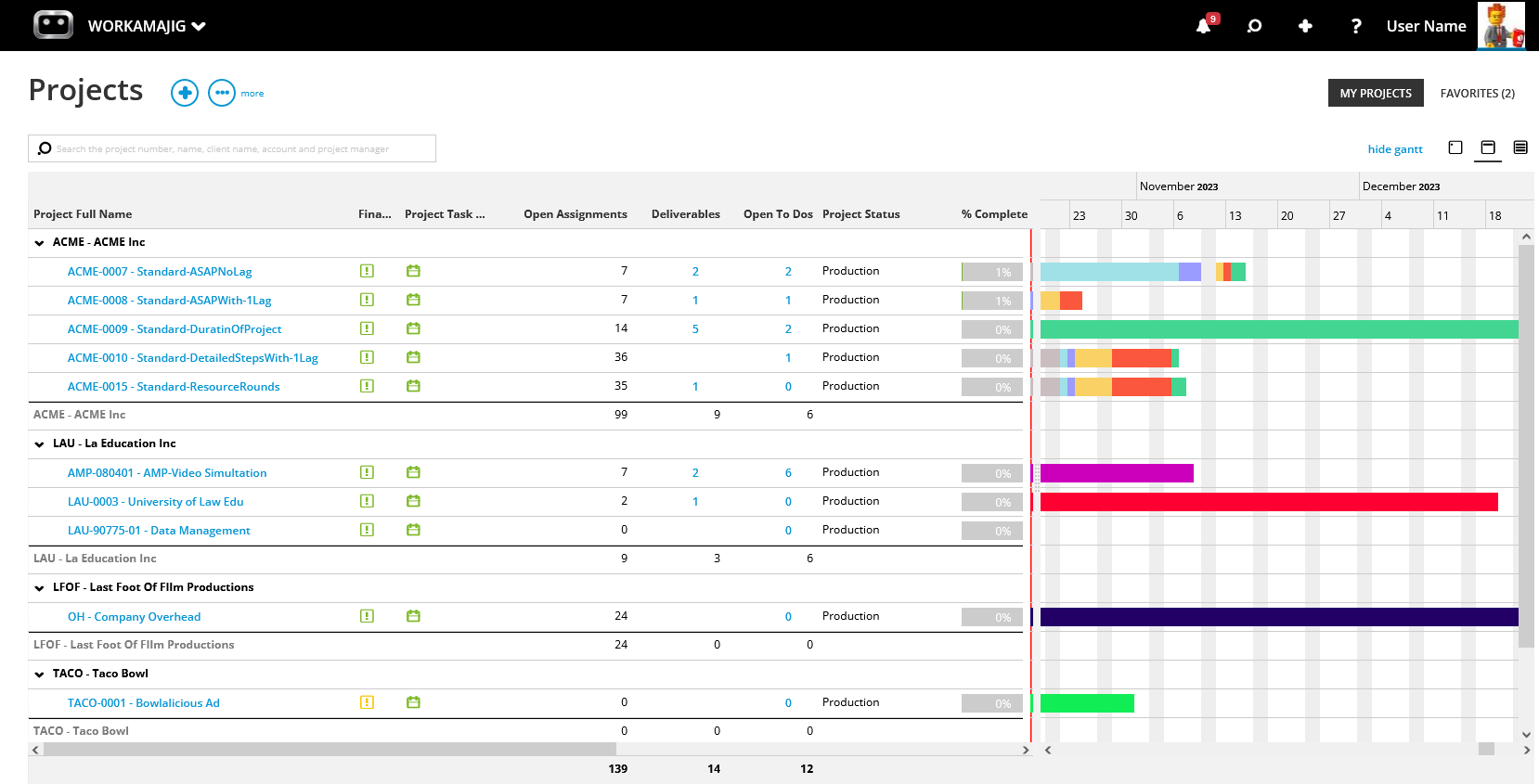
Source
This is a complete business solution made just for creative companies. Workamajig does more than manage projects. It handles everything from planning and resources to tracking time, billing clients, and accounting, making it ideal for complicated graphic design businesses.
Working with other tools
Your project tool should work well with other software your team already uses. Its real power comes from connecting easily with them. If you use Adobe Creative Suite, pick a tool that links directly to Photoshop or Illustrator. This makes sharing files, tracking versions, and getting approvals easier.
Also, link it to tools like Slack, Google Drive, or your accounting software. This creates one smooth process, prevents data from being stuck, cuts down on manual work, and helps information flow everywhere.
Teaching your team
Even the best tool works only if your team knows how to use it. Training is a must. This means more than a quick show. It includes complete introductions, hands-on practice, and easy-to-find help. Training should cover how to use the tool and your team's rules.
For example, how to name tasks or log feedback. Regular refreshers help, especially for new features or team members. Even great tools won't be used well without good training, leading to broken processes and wasted money.
The Art of Structured Creativity
Structured processes help designers create their best work. They let designers focus on ideas, not daily tasks. Good design project management keeps projects on track, improves quality, makes work smoother, reduces costly changes, and leads to happier clients.
If you're a business looking for talented designers to bring your vision to life, DesignCrowd offers a global community of skilled creatives ready to help. And if you want to design yourself with professional results, Design.com provides easy-to-use tools and many resources.
Remember, a well-managed project is not just successful. It's also a rewarding creation.
Read more on designs here:
Frequently Asked Questions (FAQs)
1. What are the key phases in a graphic design project?
The key phases that form the backbone of any graphic design project include Initiation (defining the project), Planning (creating the roadmap), Production (the creative work), Monitoring & Control (tracking progress and making adjustments), and Closing (finalizing and reviewing the project).
2. How can scope creep be avoided?
Scope creep, the uncontrolled expansion of project requirements, can be mitigated and avoided mainly by setting clear, detailed objectives and maintaining comprehensive project briefs. These documents must explicitly define the work's exact parameters, deliverables, and limitations, serving as a formal agreement and reference point for all parties involved.
3. What tools are recommended for graphic design project management?
A range of powerful tools can facilitate effective graphic design project management. Highly recommended platforms include Workamajig, Monday.com, Adobe Workfront, Asana, and Trello. The best choice depends on team size, project complexity, and specific workflow needs.
4. How many revision rounds in graphic design project management are standard?
While there isn't a universally fixed number, typically, 2-3 rounds of revisions are considered standard in most design project contracts. However, this crucial detail must be clearly defined, explicitly stated, and mutually agreed upon within the project contract or brief from the very outset. This manages client expectations and protects the designer's time and resources.
5. Why is client feedback important, and how should it be delivered?
Client feedback is critical because it ensures the design aligns with the client's expectations, brand vision, and business objectives. It helps refine concepts and prevents extensive, costly rework.
Ideally, feedback should be constructive, specific, consolidated from all relevant stakeholders, and provided through the agreed-upon project management tools to maintain a clear, documented audit trail.
Hannah Suroy suroy loves turning big stories into easy-to-digest articles about movies, TV, business, and more. These days, she mainly writes creative articles and insights focused on the world of design.
Original Artwork by Khim John Blazo
Written by DesignCrowd on Thursday, May 29, 2025
DesignCrowd is an online marketplace providing logo, website, print and graphic design services by providing access to freelance graphic designers and design studios around the world.

